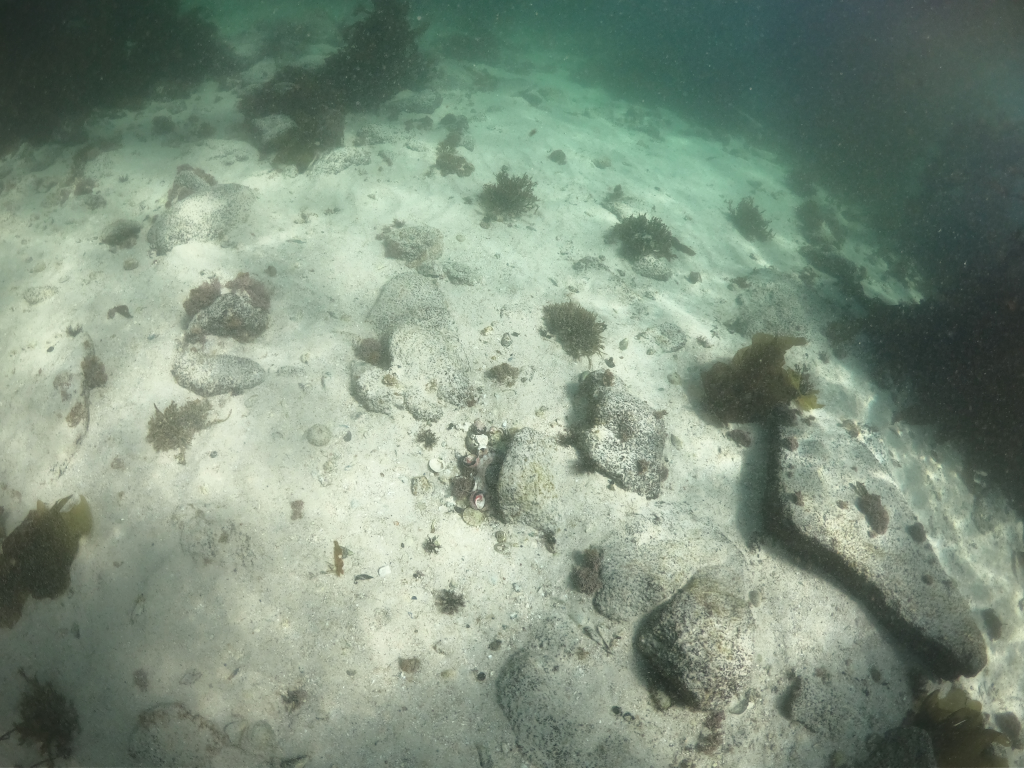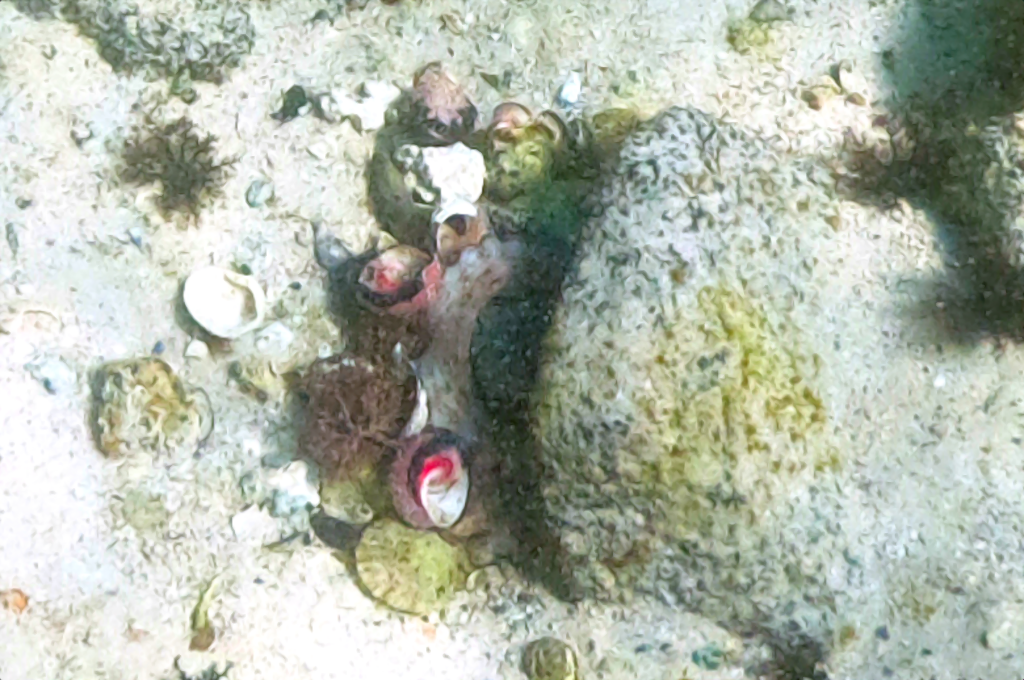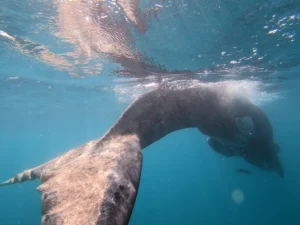Since “My Octopus Teacher” debuted on Netflix, we have regularly been asked about finding a real octopus during our snorkeling experiences and freediving courses. This now world-famous show was filmed at dive sites we regularly use for our courses and experiences. So when we are asked about the chances of seeing a cute octopus our reply is, “There is a pretty good chance of us seeing at least one”.
The art of finding a cute octopus is pretty simple. All you need to do is look for holes, overhangs or cracks that an octopus might squeeze into. There are a lot of those around, so a little more help is needed to spot one of these crafty, camouflaged sea critters. You also want to look for clusters of shells and pebbles near or around holes, overhangs or cracks. These shells are sometimes just the leftovers from octopus meals that get thrown out around the octopus den. Sometimes though, you will see the shells and if you look closer you will see suckers holding the shells. Octopi use shells as camouflage and armour to keep them hidden and protected from predators.


Ideally you will want to try to find an octopus or an octopus den from the surface. For this you will need good water visibility and water no deeper than 5m. Any deeper and your ability to spot an octopus will be impaired. If you are freediving and have a decent bottom time then spotting them deeper than 5m is possible, but definitely harder to do. Our favourite octopus sites are Windmill Beach, A-frame and Long Beach. Long Beach is particularly interesting because of the mostly sandy ocean floor topography. The ‘dens’ tend to be very inconspicuous holes in what seems to be just a sandy sea floor.
Octopus are generally nocturnal so spotting them moving about during the day is rare, but does happen occasionally. You will spot them in a hiding position during the day though and possibly catch them moving between hiding holes. The biggest octopus in the world is the Giant Pacific Octopus (Enteroctopus dofleini) and can reach lengths of over 10m. You won’t be seeing one of these around Cape Town though. In our waters two octopus species can be found namely the Southern Giant Octopus (Enteroctopus magnificus) which grows up to 1.8m long and the Common Octopus (Octopus vulgaris) which reaches about 1m in length. The Common Octopus is the small octopus you will most likely see while snorkeling in Cape Town.
For the hunters and foragers reading this, we highly recommend that you refrain from catching octopus as they are currently on the WWF SASSI orange list. Besides their vulnerable status, also keep in mind that an angry octopus will give you a tough time defending itself. There are urban legends of octopuses sticking their tentacles up people’s noses in self-defence, but in general they will wrap themselves around your arms and head and even pull off your mask.
If you need a bit of help finding your first octopus then consider joining one of our snorkeling experiences. Our snorkeling guides will help you get started spotting these cryptic creatures.



